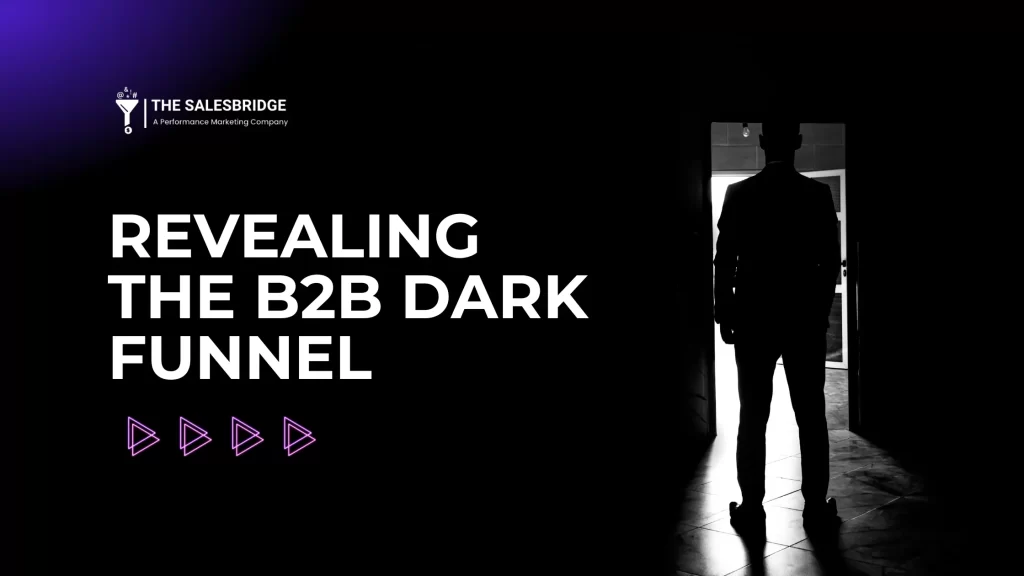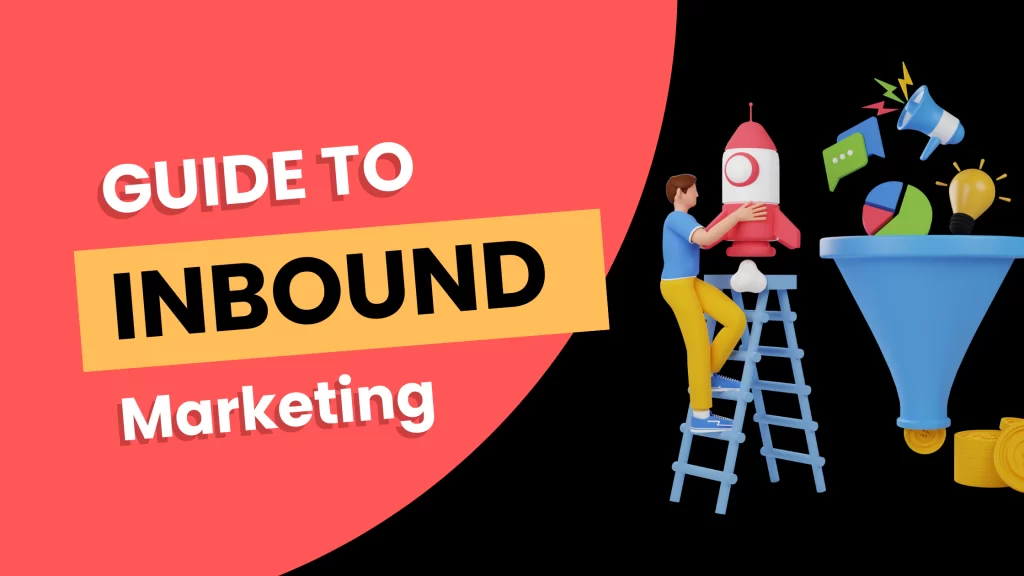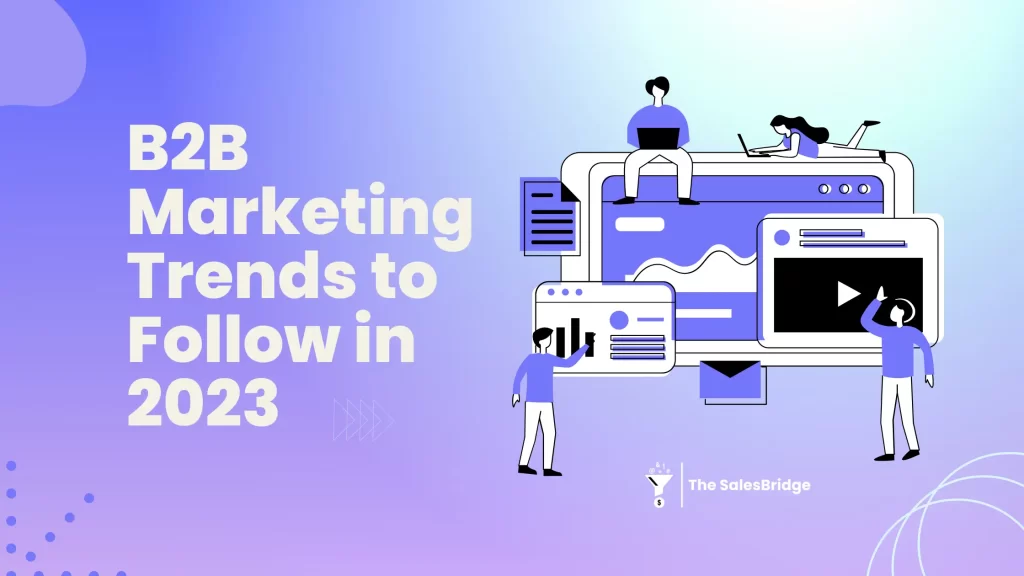The term “Dark Funnel” has been wandering around the B2B world for a while now. Though it has been around for a while, many are still unaware of what it exactly is.
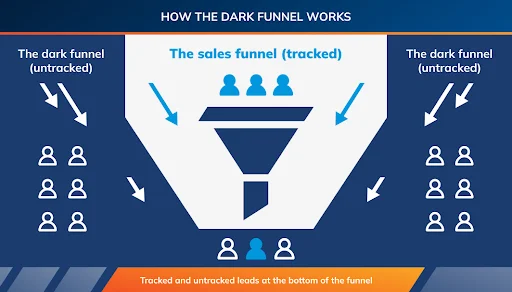
This in-depth blog will navigate and decode what the Dark Funnel actually is. We’ll be covering:
- What is the Dark Funnel
- Importance of Dark Funnel Insights
- Components of the Dark Funnel
- Leveraging Dark Funnel Insights
- Challenges and Limitations
What is the ‘Dark Funnel’?
The ‘Dark Funnel’ in B2B Marketing refers to the unidentified and untracked digital footprints of potential buyers which are not attributed to a specific source. It represents the hidden traces of the buyer’s journey.
There are several factors that contribute to the existence of the Dark Funnel:
1. Anonymous Browsing
Many buyers do their research anonymously, making it difficult for marketers to track and identify their activities.
2. Private Communication Channels
Many conversations take place through private communication channels such as messaging apps. As these channels tend to be private, they are only easily visible to some.
3. Third-party Platforms
Buyers often interact with third-party platforms or review sites during their decision-making process. These interactions may not be directly attributed to the company’s marketing efforts.
4. Offline Interactions
Many B2B interactions take place online, such as through conferences or word-of-mouth recommendations. Such interactions can be challenging to attribute to a specific online campaign.
Importance of Dark Funnel Insights
Dark Funnel insights empower B2B marketers to refine their strategies, increase customer engagement, and optimise their marketing and sales processes.
Understanding and gaining these insights is crucial for B2B marketers for the following reasons:
1. A Comprehensive View of the Buyer’s Journey
It provides insights into the entire buyer’s journey, including the parts that are not directly trackable through the usual analytics tools. This comprehensive view is essential to understand the decision-making process of the customer.
2. Unattributed Conversions
Many buyers conduct research across various channels before making a decision. Insights from the Dark Funnel help to identify those conversions that might not be attributed to specific marketing efforts. This is particularly important to measure the ROI of marketing campaigns.
3. Optimizing Content
Once marketers understand how buyers engage and consume content through private and anonymous browsing, they can optimize their content strategy. This involves creating content that is more engaging and customised to meet the requirements of the prospective buyers.
4. Fostering Sales and Marketing Alignment
It provides significant information about the kind of content that resonates with the buyer. Sharing these insights with the sales representatives aids in aligning marketing and sales efforts, enabling a more seamless and effective approach to engaging with prospects.
5. Mitigating Blind Areas
It often represents blind areas in traditional analytics. By decoding these areas, marketers can spot missed opportunities, identify potential difficulties, and tailor their strategies and approaches to mitigate these blind areas throughout the buyer’s journey.
Overall, Dark Funnel insights enable B2B marketers to cultivate their strategies, improve customer engagement and enhance the marketing and sales process. By recognizing and leveraging these untraceable footprints, businesses can achieve a competitive advantage in understanding and meeting the needs and requirements of the target audience.
Components of the Dark Funnel
The B2B Dark Funnel consists of numerous components, illustrating the stages of the buyer’s journey that are not traceable through traditional tools. These components elucidate the unattributed traces of potential buyers.
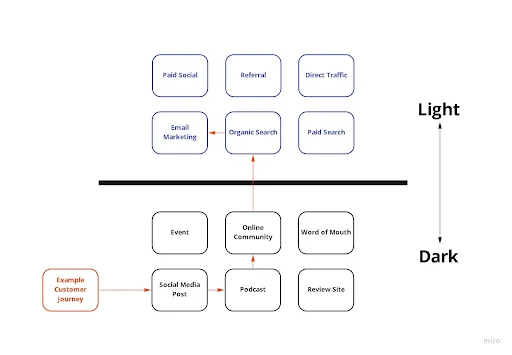
Here are the key components:
1. Anonymous Websites
Buyers often research products or services without directly engaging with the business. When people make anonymous website visits without providing any identifiable intent data, it is considered to be part of the Dark Funnel. According to Strategicabm, 1 out of 6 website users visit websites through social media apps or private channels.
2. Incognito Mode
Many buyers tend to use browsers in incognito mode or conduct private online searches. This prevents the tracking of their activities.
3. Direct Navigation
Sometimes, users directly type the URL into the browser without clicking on any specific link. As a result, it becomes difficult to attribute such activities to a particular marketing effort or source. This becomes a part of the Dark Funnel.
4. Offline Interactions
Its components extend beyond online activities. Offline interactions such as conferences, meetings, events, summits, etc., do contribute to the buyer’s journey but are not usually traceable as easily.
5. Cross-Device Interactions
At times, a prospect may conduct research across multiple devices. He/she may start by searching on the phone, then move to a laptop and conclude it on another device. Such cross-device interactions are considered a part of its components.
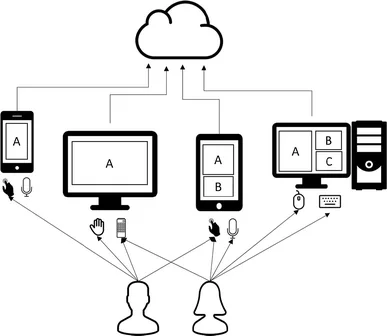
Having a distinct understanding of these components is crucial for marketers to have a comprehensive judgement of the buyer’s journey. Advanced analytics tools, attribution models, and a focus on customer pain points help disclose and leverage these concealed interactions for more informed marketing strategies.
Leveraging Dark Funnel Insights
Leveraging B2B Dark Funnel Insights is essential for marketers to understand the buyer’s journey better and enhance their strategies accordingly.
Here is how you can leverage its insights:
1. Cross-channel Attribution
Implement cross-channel attribution models in order to connect the dots between different marketing channels and touchpoints. This approach helps to attribute value to the interactions that take place outside the conventional marketing funnel.
2. Content Personalization
With insights from the Dark Funnel, you can personalize your content. Customize website, email and other marketing content according to prospect preferences and information they may have accessed through it.
3. Lead Scoring
Refine your lead scoring model to incorporate Dark Funnel activities. Assign values to specific interactions or behaviours that indicate a prospect’s level of interest, even if those interactions occur outside the sales funnel.
4. Behavioral Retargeting
Implement behavioural retargeting based on Dark Funnel activities. Use ad platforms to retarget users who have shown specific interests or engaged with particular content, guiding them back into the conversion funnel.
5. Mapping the Customer Journey
Develop a detailed custom journey map that includes Dark Funnel touchpoints. Understand the pattern of interactions and the channels prospects navigate before making any decision. This aids in aligning marketing efforts with the buyer’s journey.
By actively leveraging these insights, marketers can develop more targeted and personalized campaigns, and improve their overall ROI. The ultimate goal is to bridge the gap between visible interactions and those that occur in the shadows of the buyer’s journey.
Challenges and Limitations of the Dark Funnel
Though it provides valuable insights into buyer behaviour, it does come with its own set of limitations and challenges. Understanding these limitations is important for marketers aiming to navigate the complexities of the digital landscape.
Here are a few limitations and challenges associated with it:
1. Limited Visibility
The primary challenge here is limited visibility regarding specific interactions. Dark Funnel activities often happen through private channels or platforms that are difficult to track. This further complicates the attribution of specific actions to individual leads.
2. Attribution Complexity
Attributing conversions and actions to the right touchpoints becomes complex. As the buyer’s journey is no longer a linear path, attributing value to various interactions across channels becomes challenging without comprehensive data.
3. Concerns Regarding Data Privacy
Privacy regulations, such as GDPR and CCPA, impose restrictions on the collection and use of user data. Marketers need to navigate these regulations carefully to avoid legal consequences while still attempting to uncover Dark Funnel activities
4. Inability to Recognize all Interactions
It can be very challenging to identify each and every interaction within the Dark Funnel. Some activities may remain entirely obscure, leaving marketers with a fragmented picture of the buyer’s journey. Delivering material that is genuinely personalised and targeted is hampered by this limitation.
5. Difficulty in Measurement
Quantifying the effect of these activities on the overall marketing strategy is difficult. When a campaign targets prospects who are interacting off-site, marketers find it difficult to gauge its efficacy.
Despite these obstacles, it is still worth pursuing. Marketers must create strategies that optimise advantages while minimising possible hazards, striking a balance between their pursuit of underlying insights and knowledge of these limitations.
Conclusion
The more you dive deep into the B2B Dark Funnel, the better the results you’ll get. This creates a massive to shorten the conversion time.
As we step further into the ever-evolving field of marketing, the Dark Funnel is only going to grow. These insights are being used in multiple B2B marketing strategies such as Demand Generation and Account-based Marketing.
Staying ahead of the game does involve a huge learning curve, research and analysis, but the insights lead you to a goldmine of unobscured information.

